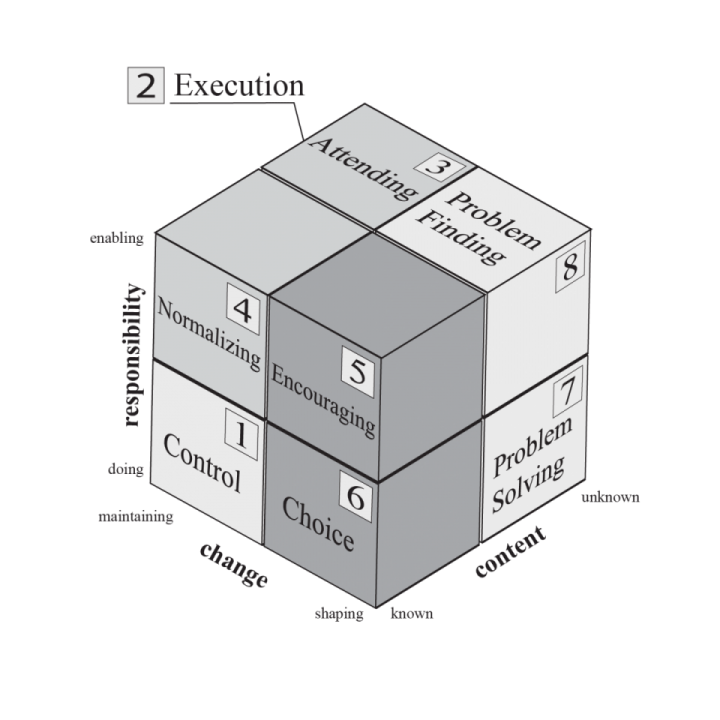Outcomes is what clients often say they hire your firm for and expect to get from you. However, even the most thick-headed of buyers understands that results don’t pop up magically out of their own volition. It is through the process that particular outcomes are rendered.
Some clients may remark that they’re not interested in your process: We expect and will pay for results. Most of the time, you can dismiss that statement as either bullshit, power play, or ignorance. There are also scenarios where this sentiment points to disinterest in Frontstage (visible touchpoints) activities.
Here is a comical analogy. The client buys a ticket to the hottest Broadway show and sleeps through the main act — where the main performance is carried out (frontstage). Despite that, the client is still content with the service because now they can brag about having attended the latest show. And maybe their spouse is less crabby now, too.
In that sense, it is the deliverables and outcomes, not the process, that the client wanted, because they really didn’t care about the performance part of the show anyway. For the service provider, that means that the performance act could’ve been cast with junior (amateur) performers — the client would’ve been none the wiser. However, if that same client, apart from the fact of attending the show, had an accompanying goal of making the spouse less crabby, the performance had to be good enough. Albeit, not for the client, but for the spouse.
While it may often be possible to attain similar deliverables irrespective of the process, outcomes are inescapably linked to it. Changes to the process will impact the outcomes. And vice versa. Different desirable outcomes may require changes to the process.
Here is one practical takeaway. Knowing that a particular client has no interest in your performance, frontstage activities can be minimized (and some removed completely) or staffed with junior and paraprofessionals thus reducing costs for your firm.
Value Activities
Back in the day, two professors at the Norwegian School of Management introduced a Value Shop concept which is applicable to PSFs. The Value Shop breaks value creation process into five primary activities: (8) Problem-finding and acquisition, (7) Problem-solving, (6) Choice, (2) Execution, and (1) Control and evaluation (Stabell & Fjelstad, 1998). My observations and analysis suggest the importance of including three additional Value Activities to the original list: (3) Attending , (5) Encouraging and (4) Normalizing (see Figure 1).

Value Activities (VA) occur frontstage and backstage. Even if your firm doesn’t provide much of client contact, i.e., most of the implementation occurs in the back office, your professionals do experience the Value Activities themselves. And that’s, in part, where the value capture for the firm occurs.
For example, if a firm employs professionals who couldn’t care less about Problem-finding and Attending activities — not their thing — but who’d rather prefer going straight for Execution, they aren’t going to be particularly excited with having to provide those “irrelevant” (in their view) VAs to clients. Unhappy professionals tend to exhibit lower job satisfaction which leads to poorer financial performance of the firm. So, if specific VAs are to be provided for the client, it makes sense to analyze which ones are of particular interest to which professionals.
The Value Activities are numbered and assigned to particular octants (see Fig.1). You can think of them as interconnected chambers. In an ideal world of professional services, — so it may seem — any client would always start with chamber 8 (Problem-finding) and proceed entering the remaining chambers sequentially, one by one, from highest digit to lowest. However, in many cases this doesn’t make a lot of sense.
It is up to you to decide who will have the decision-making power over which chambers to keep open, in what sequence they should be (re)entered, and how big or small those chambers ought to be. However, whoever makes those decisions, — you or the client —effectively formulates your firm’s business strategy. It can be you. It can be the client. Or it can be a tango.
You can define a starting point of service provision and decide which VAs to include and remove, which ones to amplify and which ones to reduce. In other words, which chambers to shut, to enlarge, or to shrink. You can also decide on the sequence of those VAs. You can either completely disallow clients to change chamber-entering sequence in your process, or you can decide to be super-flexible about this.
There are numerous ways you can approach this sequencing and thus create a differentiated offering. Again, this is part of your business strategy. Therefore, immensely important. To learn more about Value Activities, consider reading this article: Eight Value Activities of Competitive Advantage.
Experiencing
The value of experiencing seems obvious when we think about it. However, it often gets left out during service design. Nothing-but-Outcomes proponents tend to overemphasize hard facts, data, rationality, logic, and downplay irrational ideas, feelings, what-ifs, and why-nots.

Consider taking a flight from Honolulu to Los Angeles, CA. On the one hand, it’s a simple business transaction. The airline captures value by selling tickets. And it creates value for passengers by flying them to their desired destinations. However, the process of experiencing the service provision across all phases and stages of the buyer journey — buying a ticket, changing the booking, checking in luggage, waiting times, crying babies, eerily behaving neighbors, awful meals, relentless seat-kicking rascals, and other Snakes on the Plane — can be so frustrating that some passengers (if they survive) will refuse to deal with that airline in the future despite the fact of physically (not mentally) safely getting to their desired destination.

The experiencing occurs in the process of service provision. These are the feelings and emotions as well as expectations about the service.
To prove my point, consider a simple sentence: “You need to pay attention.” The information contained in this sentence delivered in a different tone of voice can produce completely different outcomes. First, try pointing a finger at someone saying this sentence in a sharp, loud voice. Alternatively, say the exact same words sympathetically, calmly, and gently. The former will put another person on the defensive. The latter option is likely to come off as supportive.
Goal facilitators
We experience positive emotions while pursuing meaningful goals. We are wired this way. Because positive emotions are an antidote to negative emotions (anxiety, depression, anger) which we tend to avoid or minimize, pursuit is valuable. Hence, clients derive value from seeing themselves moving toward a desired goal.
With regard to pursuit of meaningful and valuable goals, it must be stressed that whoever the decision makers on the buyer’s side are, each of them have their own clew of goals: personal, career, group, departmental, corporate, etc. Not to mention any Games of Thrones that you’re likely oblivious to. However, you can somewhat disregard this complexity as long as you understand the four basic motivational states that grip decision makers’ goals: (1) Control, (2) Belonging, (3) Mastery, and (4) Exploratory Curiosity.
You can think of Goal Facilitators (GF) as helpers that assist buyers in their movement toward their goals. The eight GFs are: (1) Markers of Stability, (2) Markers of Progress, (3) Allies, (4) Friends, (5) Skills, (6) Tools, (7) Elixir, and (8) Perspective. The last two are change agents — somewhat magical elements. As shown in Table 1, the eight Goal Facilitators can be mapped broadly onto the four motivations. Each GF is a category from which to derive artifacts and activities that will be perceived as valuable.
| Motivations | Goal Facilitators |
|---|---|
| Control | Markers of Stability |
| Markers of Progress | |
| Belonging | Allies |
| Friends | |
| Mastery | Tools |
| Skills | |
| Exploratory Curiosity |
Elixir |
| Perspective |
How do you incorporate GFs into your service offerings? Consider Skills. Motivated by sense of Mastery, some of your clients will be open to consider training or coaching in addition to the core service. New skills will allow client organization to facilitate attainment of their organizational goals themselves. Typically it isn’t considered such an outrageous proposition to pay for training.
As another example, consider providing clients access to your case or project management system. Your clients will have their own dashboard with progress status, reports, interactive pie charts, latest comments and notifications from professionals (associates or para) assigned to the work project (case). Most of that stuff will be perceived as Markers of Stability and Progress, hence valuable.
You may decide to charge for access to specific GFs or make it part of your unique value proposition — something competitive alternatives don’t offer. To learn more about Goal Facilitators, consider reading this article: Eight Goal Facilitators to Improve your Service Offerings.
The awezzom question of the day:
How do we intentionally create more value through our process?
I’m giving a presentation on the topic of value creation and capture through service design on Nov 3, 2025 in Las Vegas, NV, at the Financial Planning Association (FPA) Annual Conference.
Together, we will explore how to create more value for clients and capture more value for the firm. This article briefly covered 3 out of 15 value components.
Over the years I've built a substantial body of knowledge on specific constituent elements of value. And, much to many economists' chagrin, I must concede that value isn't only about the money. Money is a substantial yet still only a part of the overall value to be created and captured before, during, and after service provision.
Apart from theoretical underpinning, we will explore a step-by-step framework that will allow firms and solo practitioners to run service design workshops themselves.
Looking forward to this. It's going to be an exciting session.
The topicof value creation & capture is relevant for all professional service firms today. So, if you're with an accounting or law firm, or marketing agency working with financial planners, this will be the perfect opportunity to catch up with your target audience.

